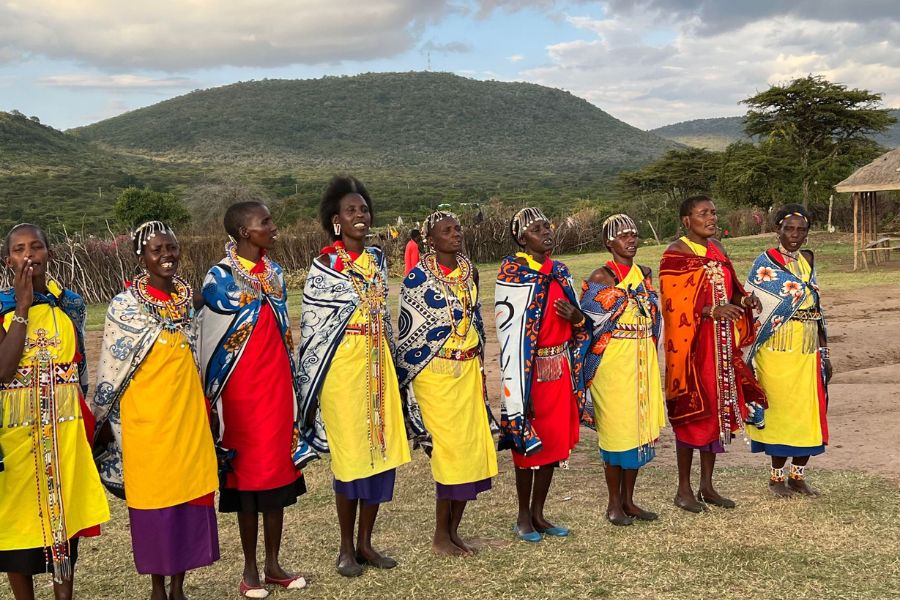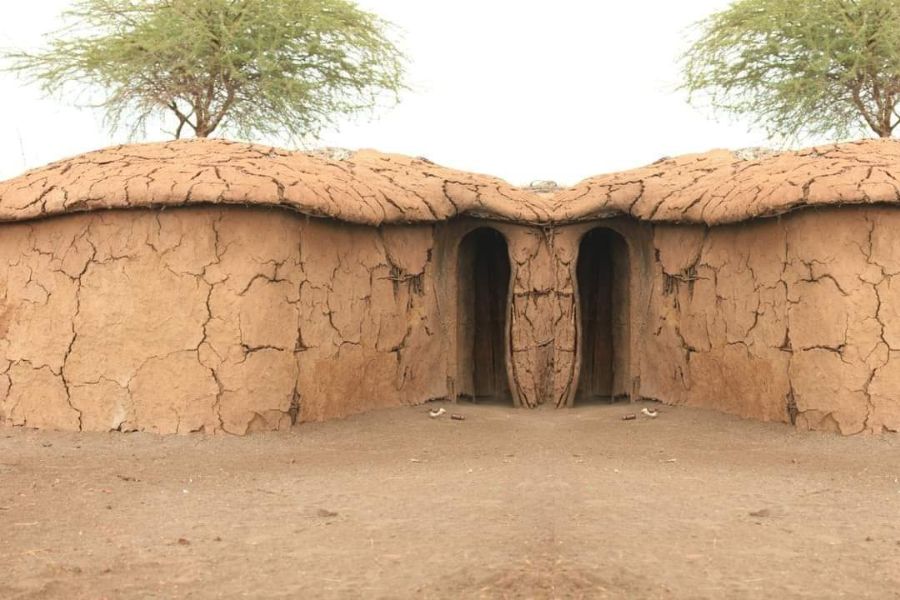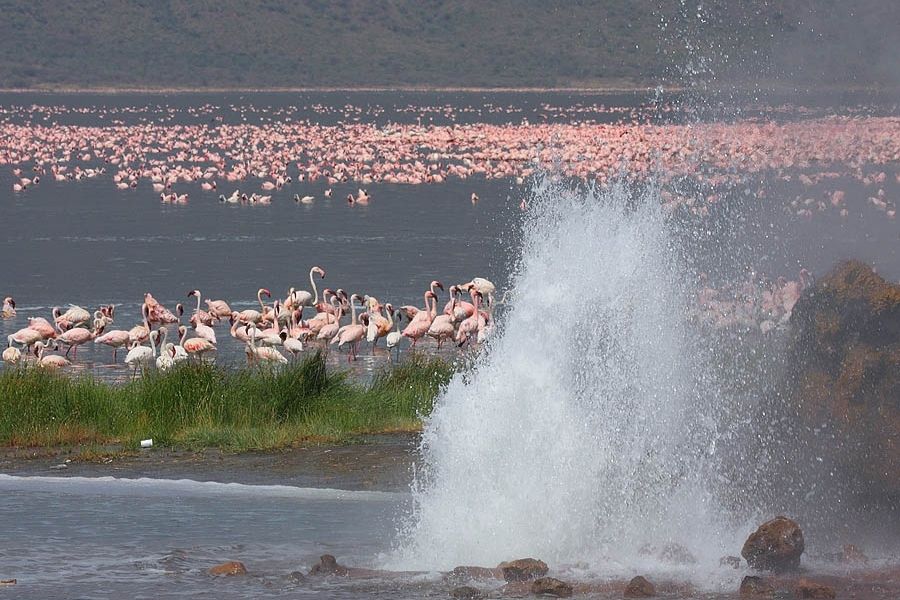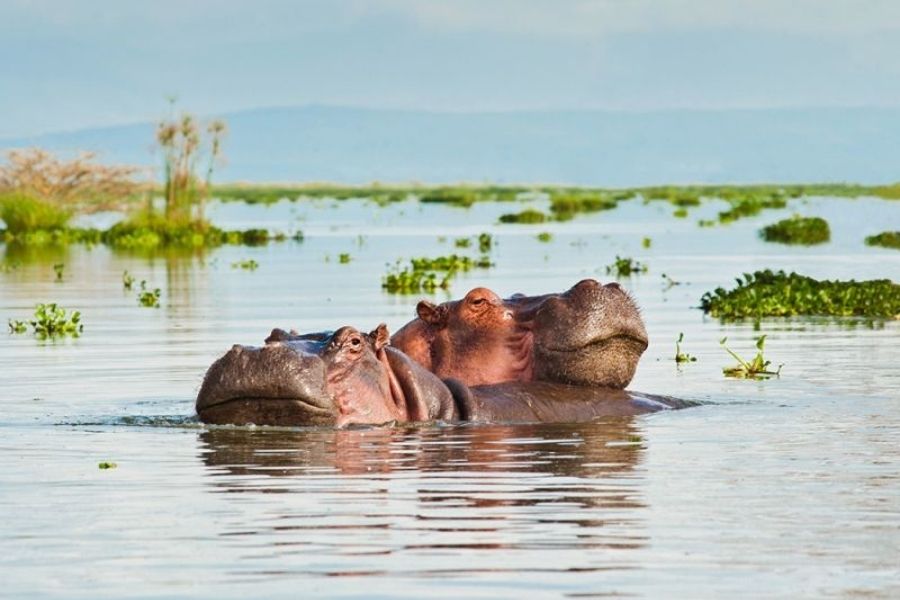
Step into Living History: Maasai Tribal Traditions
◾ #1 Rated Maasai cultural experience (TripAdvisor 2023)
◾ Direct community support: $20 fee funds village schools
◾ Pair with Great Migration safaris for a full Kenya immersion
The Complete Maasai Village Tour Experience
Rhythms of the Savannah: Maasai Music & Dance
Your Maasai Cultural Package Includes:
| ✅ Village donation ($20) | ✅ Warrior dance performances |
| ✅ Beadwork demonstration | ✅ Cattle milking experience |
Why Visit a Maasai Village?
What Can You Experience on a Maasai Village Tour?
Colorful Culture:
Music & Dance:
◾ Join the adumu dance, where warriors leap high to rhythmic chants—a powerful display of strength.
Plan Your Maasai Cultural Tour
Why Travelers Love Maasai Tours
Book Your Maasai Cultural Tour Today!
High-Value Keywords: Kenya safari tours, Tanzania cultural experiences, Maasai Mara travel, sustainable tourism in Africa.
Why Choose Our Authentic Maasai Tours?
🇰🇪 Local Partnerships
🏆 Award-Winning
🦁 Conservation Focus

Introduction:
Awesome! Let's dive into the first main section.
1. Why Maasai Mara Should Be on Every Traveler’s Bucket List
The Big Five and Beyond
The Great Migration: Nature’s Greatest Show
Stunning, Iconic Landscapes
Cultural Encounters with the Maasai People
Accessibility and Conservation Efforts
2. When to Visit: The Best Times for a Safari in Maasai Mara
July to October: The Great Migration Season
December to March: Warm Weather and Calving Season
April to June: Green Season (Low Tourism)
Month-by-Month Quick Breakdown:
When’s the Best Time Overall?
3. How to Choose the Right Safari: Tour Packages, Camps, and Lodges
Types of Safari Packages
Group Safaris (Shared Tours)
Private Safaris
Fly-in Safaris
Safari Accommodation Options
Luxury Camps and Lodges
Types of Safari Accommodations
These offer the quintessential safari vibe — canvas tents (often luxurious) with en-suite bathrooms, real beds, and private decks. Options range from budget to ultra-luxury. Many are located inside or just outside the reserve and offer an immersive “in-the-wild” feel.
Permanent structures with all the modern amenities: electricity, Wi-Fi, swimming pools, and restaurants. Lodges are great for those who want comfort and a stable base.
Set up seasonally to follow the Great Migration, these are typically mid-to-high-end options offering a front-row seat to wildlife action. They’re ideal for adventure travelers.
If you're on a strict budget, some stay in towns like Narok or outside the park gates. These are cheaper but require longer drives to enter the park daily.
Inside the Reserve vs. in the Conservancy
Private vs. Group Safaris
Safari Experiences to Consider
Budgeting Tips
What’s Usually Included in a Package?
Watch Out for These Red Flags
Booking Tips for First-Timers
4. Prepare Travel Documents, Vaccinations, and Insurance
Travel Documents and Essentials:
Visa Requirements.
Essential Vaccinations and Health Precautions
Travel Insurance
Emergency Numbers and Local Contacts.
Pro Tip: Get a Yellow Fever Card
Clothing: Dress for the Environment.
Gear and Gadgets
Toiletries and Health Kit:
Packing Tips
Optional but Helpful
Money and Currency
Connectivity and Internet Access
Safety Tips
5. Making the Most of Your Safari: Photography, Wildlife Etiquette & Cultural Insights
Safari Photography Tips
Wildlife Viewing Etiquette
Cultural Etiquette with the Maasai People
Sustainable and Responsible Safari Travel
Slow Down and Savor the Experience
6. FAQs About Planning a Maasai Mara Safari
1. How many days should I spend in the Maasai Mara?
2. Is it safe to travel to the Maasai Mara?
3. Can children go on safari?
4. Do I need a guide, or can I self-drive?
5. What's the tipping etiquette in Kenya?
6. Do I need to worry about language barriers?
7. Can I charge my electronics in the Mara?
Conclusion

With zero scams, full trust, and smart choices.
Why This Article Exists
Safari Scams to Watch Out For
1. Fake Tour Companies with Slick Websites
2. Unrealistically Cheap Packages
Yeah… no. That doesn’t even cover the package's park fees.
3. Last-Minute Price Hikes
4. No Licenses or Permits
How to Book a Kenya Safari Safely (Step-by-Step)
Step 1: Choose a Trusted Safari Operator
Look for:
Blavals Adventure is proudly Tour Operator-certified and locally operated from Nairobi.
Step 2: Ask These Key Questions
Step 3: Pay Safely and Smartly
Step 4: Get Everything in Writing
Step 5: Prep Your Documents & Vaccinations
Why Trust Matters in Safari Planning
What Makes a Safari Operator “Reliable”?
✔️ Be registered in Kenya
✔️ Have a physical office you can visit
✔️ Provide sample itineraries on request
✔️ Let you speak with past clients (yes, really!)
✔️ Have a real presence on social media and Google Maps
Sample 3-Day Safari Itinerary You Can Trust
Day 1:
Day 2:
Day 3:
Final Thoughts: Don’t Just Book—Book Smart
Real FAQs from First-Time Safari Travelers
Do I need to book months in advance?
Is it better to book directly or through an agent?
Are deposits refundable if I cancel?
How can I check if a company is legit?
Is a cheap safari still safe?
Can I customize my safari?
Want a Free Safari Booking Checklist?

Introduction: Inside Kenya’s Greatest Wildlife Spectacle – A Safari Lover’s Dream

1. Kalama Conservancy: Night Safaris with Samburu Trackers.
Why It's Unique:
Eco-Accommodation Options (Mid-Range to Luxury)
1. Saruni Samburu (Luxury)
2. Sasaab Lodge (Semi-Luxury)
3. Sabache Camp (Mid-Range)
Suggested Itinerary: 3 Days / 2 Nights in Kalama Conservancy
|
Day
|
Activity
|
|
Day-1
|
Arrival at Kalama Conservancy, Samburu greeting & orientation.
Sunset camel ride. Traditional Samburu dinner & storytelling.
|
|
Day 2
|
Early morning game drive in Samburu National Reserve.
Afternoon visit to a Samburu homestead. Evening night safari
guided by Samburu warriors. Stargazing session.
|
|
Day 3
|
Guided nature walk at dawn. Visit to the local women’s craft
cooperative. Departure after lunch.
|
Cultural + Adventure Highlights
2: Lake Bogoria Flamingo Migration – A Sky of Pink Feathers
Why It’s Unique:
Eco-Accommodation Options Near Lake Bogoria
1. Lake Bogoria Spa Resort (Mid-Range)
2. Tumbili Cliff Lodge (Semi-Luxury)
3. Camping at Lake Bogoria National Reserve (Budget Option)
Suggested Itinerary: 2 Days / 1 Night at Lake Bogoria
|
Day |
Activity |
|
Day-1 |
Arrive at Lake Bogoria via Nakuru or Baringo. Afternoon flamingo viewing walk along the
lakeshore. Evening soak in the geothermal spa pool. Dinner under the stars.
|
|
Day 2 |
Sunrise at the geysers and a flamingo sunrise shoot. An optional cultural visit to an Endorois
village to learn about indigenous lake stewardship. Depart after lunch.
|
Cultural + Adventure Highlights
3: Aberdare Ranges – High-Altitude Rainforest Wildlife Encounters
Why It’s Unique:
Eco-Accommodation Options in the Aberdares
1. The Ark Lodge (Mid-Range)
2. Aberdare Country Club (Semi-Luxury)
3. Treetops Lodge (Luxury)
Suggested Itinerary: 3 Days / 2 Nights in the Aberdares
|
Day
|
Activity
|
|
Day 1
|
Arrive at Aberdare Country Club. Afternoon nature walk and sundowner with views of the Aberdares escarpment. Dinner at the lodge.
|
|
Day 2
|
Game drive through Aberdare National Park: waterfalls, highland forest, and bongo tracking. Evening check-in at The Ark.. Night wildlife viewing from lodge hideouts.
|
|
Day 3
|
Morning birdwatching. Optional visit to Solio Ranch (nearby private rhino sanctuary). Depart after lunch.
|
Cultural + Adventure Highlights
4: Arabuko Sokoke Forest – Kenya’s Coastal Jungle Safari
Why It’s Unique:
Eco-Accommodation Options Near Arabuko Sokoke
1. A Rocha Kenya Field Study Centre (Mid-Range / Budget)
2. Temple Point Resort, Watamu (Semi-Luxury)
3. Kaya Kinondo Eco-Lodge (Luxury Eco Experience)
Suggested Itinerary: 2 Days / 2 Nights in Arabuko Sokoke
|
Day |
Activity
|
|
Day 1 |
Arrival in Watamu. Afternoon birding walk in the forest. Evening Mijikenda storytelling and Giriama music session.
|
|
Day 2 |
Sunrise forest walk with a focus on rare mammals. Butterfly and tree identification walk. Visit to Kaya Mudzimuvya sacred forest. Sunset canoe trip at Mida Creek.
|
|
Day 3 |
Optional butterfly house tour. Depart after breakfast or head to Malindi for a beach extension.
|
Cultural + Adventure Highlights
Section 5: Lake Baringo Canoe Safari – Wildlife on Water
Why It’s Unique:
Eco-Accommodation Options at Lake Baringo
1. Roberts’ Camp (Mid-Range)
2. Island Camp Baringo (Semi-Luxury)
3. Samatian Island Lodge (Luxury)
Suggested Itinerary: 3 Days / 2 Nights at Lake Baringo
|
Day |
Activity
|
|
Day 1 |
Arrive via road from Nakuru or Bogoria. Afternoon canoe safari through papyrus-lined lagoons. Sunset birdwatching from the lodge.
|
|
Day 2 |
Morning cultural visit to Njemps village. Afternoon nature walk around the cliffs. Optional boat trip to hot springs. Stargazing after dinner.
|
|
Day 3 |
Early morning birding cruise. Leisure breakfast and departure or transfer to nearby destinations.
|
Cultural + Adventure Highlights
Accommodation Summary by Budget – Tailored Safari Comforts
1. Lake Bogoria – Flamingo Migration Safari
|
Tier |
Accommodation
|
Why It’s Ideal
|
|
Mid-Range |
Lake Bogoria Spa Resort / Soi Safari Lodge / Island Camp Baringo
|
Great location with a geothermal spa, perfect for relaxation after flamingo watching. Proximity to the park makes it convenient for early morning visits.
|
|
Semi-Luxury |
Tumbili Cliff Lodge / Samatian Island Lodge /
|
Elevated views, quiet atmosphere, eco-conscious architecture, and personalized service. Excellent for birders and photographers.
|
2. Aberdare Ranges – High-Altitude Rainforest Safari
|
Tier |
Accommodation
|
Why It’s Ideal
|
|
Mid-Range |
The Ark Lodge
|
Unique “Noah’s Ark” style lodge overlooking a waterhole. Perfect for night game viewing.
|
|
Semi-Luxury |
Aberdare Country Club
|
Colonial charm meets wildlife sanctuary. Offers horseback riding and nature walks on private land.
|
|
Luxury |
Treetops Lodge
|
Historic, elevated lodge with rich heritage and 24/7 wildlife viewing. Often visited by elephants and leopards.
|
3. Arabuko Sokoke Forest – Coastal Jungle Safari
|
Tier |
Accommodation
|
Why It’s Ideal
|
|
Mid-Range |
A Rocha Kenya Eco-Centre
|
Budget-friendly, conservation-focused stay. Great for educational travel and family nature retreats.
|
|
Semi-Luxury |
Temple Point Resort
|
Blends relaxation, eco-tours, and Mida Creek adventures. Easy access to both the forest and the beach.
|
|
Luxury |
Kaya Kinondo Eco-Lodge
|
Offers a deeper cultural and spiritual connection with the Mijikenda heritage. Rustic elegance meets cultural immersion.
|
4. Lake Baringo – Canoe Safari
|
Tier |
Accommodation
|
Why It’s Ideal
|
|
Mid-Range |
Roberts’ Camp
|
Affordable, eco-friendly camp run by locals. Offers intimate access to hippos, birds, and lakeside activities.
|
|
Semi-Luxury |
Island Camp Baringo
|
Private island vibe, lake views, and solar-powered comfort. Ideal for couples or small groups.
|
|
Luxury |
Samatian Island Lodge
|
Ultra-private island lodge with bespoke service. Excellent for luxury travelers seeking peace and nature.
|
Comprehensive Safari Itinerary + Package Overview
12-Day Safari Itinerary: “Kenya’s Hidden Wild”
|
Day |
Location
|
Activities
|
|
Day 1 |
Nairobi Arrival
|
Airport pickup, overnight at eco-hotel, pre-safari briefing
|
|
Day 2–3 |
Aberdare Ranges
|
Game drives, bongo tracking, forest walk, overnight wildlife watching
|
|
Day 4–5 |
Lake Bogoria
|
Flamingo viewing, geysers, hot springs tour, and optional cycling in the Rift Valley
|
|
Day 6–7 |
Lake Baringo
|
Canoe safaris, birding cruise, visit to Njemps village
|
|
Day 8–9 |
Option 1:Arabuko Sokoke / Watamu & Malindi
Option 2:Diani / Wasini Island
|
Birdwatching, sacred kaya forest tour, Mijikenda cultural show
|
|
Day 10–11 |
Lamu (Option)
|
Cultural spa experience, ocean snorkelling, local food tour
|
|
Day 12 |
Nairobi Return & Departure
|
Internal flight or drive to Nairobi, departure prep
|


